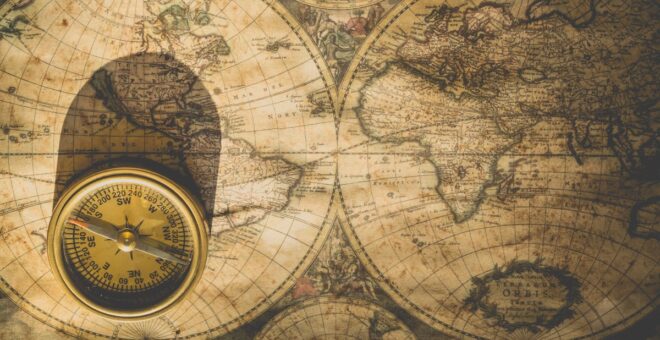As mentioned briefly in the “Why Some Zmanim Never Occur” post, the Lubavitch Jewish Center of Anchorage, Alaska has an interesting davening (prayer) direction question. As explained in the “Bearing to Yerushalayim and Zmanim Map” (additional technical information is available in the “Technical Information about the Bearing to Yerushalayim Map” post), there are two opinions about the proper direction to face during Tfilah (prayers). The Levush and others are of the opinion that one should face the rhumb line direction to Yerushalayim, while the Emunas Chachamim and others are of the opinion that one should face the initial bearing of the great circle route. Both of these opinions would clearly use the shortest rhumb or great circle lines to Yerushalayim. As an example, a person standing on Har Hazaisim (Mount of Olives) a mile east of Har Habayis would not daven east using the logic that continuing east for approximately 21,175 miles[1] would reach Yerushalayim via global circumnavigation, when Har Habayis is just one mile to the west. The shul in Anchorage is located at a longitude of -149.861°. The antipode of Har Habayis is on the -144.764851 longitude line – 180° of longitude from Har Habayis. People on different sides of this line (this line is also the halachic dateline according to Rav Yechiel Michel Tucazinsky and others) will daven in opposite directions. The Anchorage shul with a longitude of -149.861° is 169.69 miles (273.1 km) west of the -144.764851° longitude line[2]. For this reason, the shul should daven not east, but west (255.78° from the north, or slightly south-west) if using the common rhumb line calculation, or north (355.67° from the north, or slightly west of north) if using the great circle calculation. Alaska is the only location in the world that has the -144.764851° longitude line cut across dry land, and is therefore the only non-ocean location to face this issue.
Notes:
1. Based on a rhumb line along the 31° 50′ circle of latitude as opposed to 24,901 miles at the equator) using a WGS84 Reference ellipsoid.
2. Rhumb line calculation as calculated by Movable Type using the same latitude for both points. The ellipsoidal shape of the earth is factored into this calculation. The short distance means that the 169.66 mi (272.98 km) great circle distance is very close to the rhumb line distance.
 I have been asked a number of questions recently about the directional accuracy of the
I have been asked a number of questions recently about the directional accuracy of the